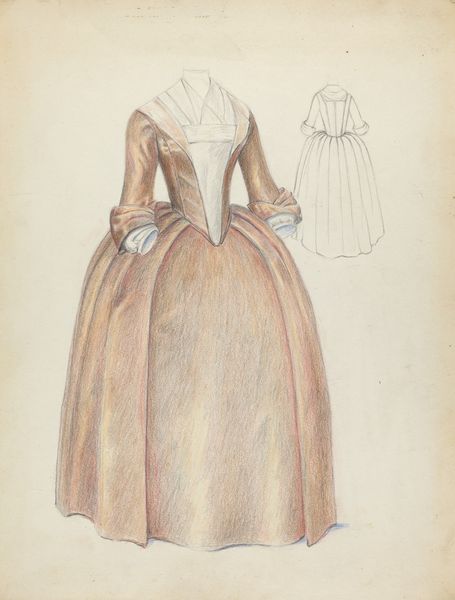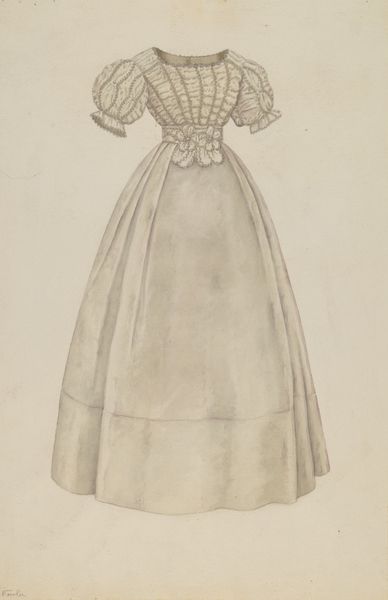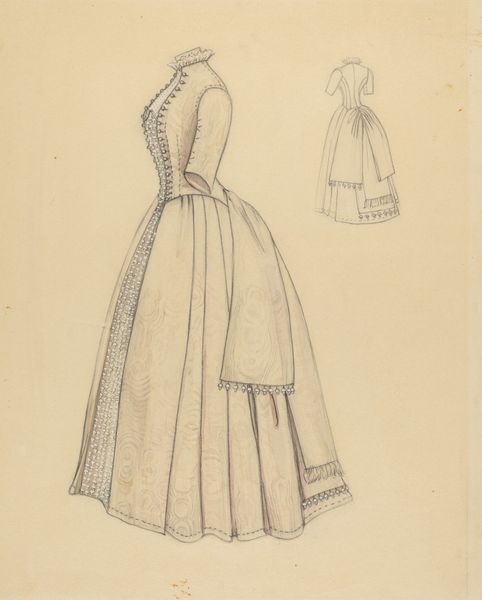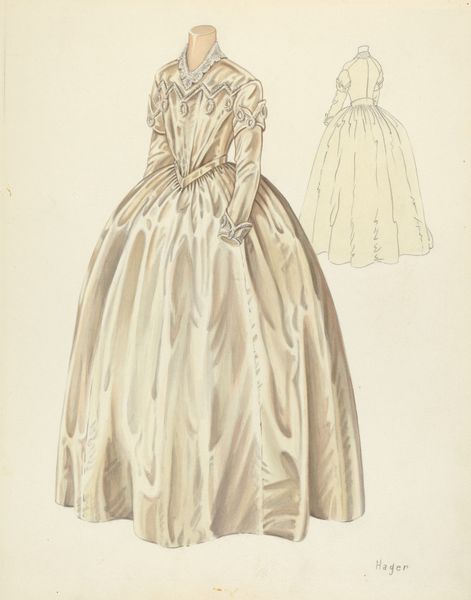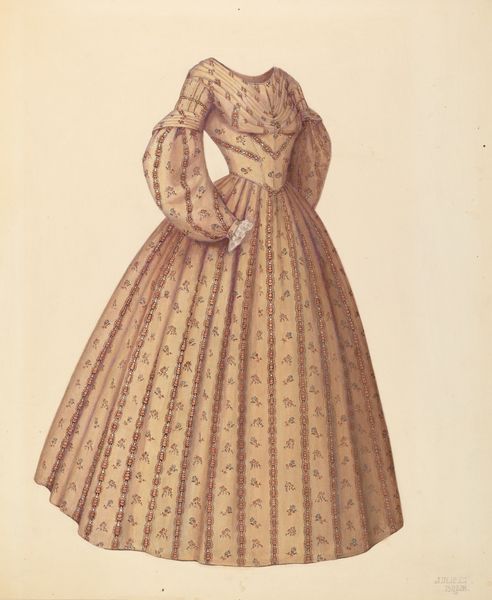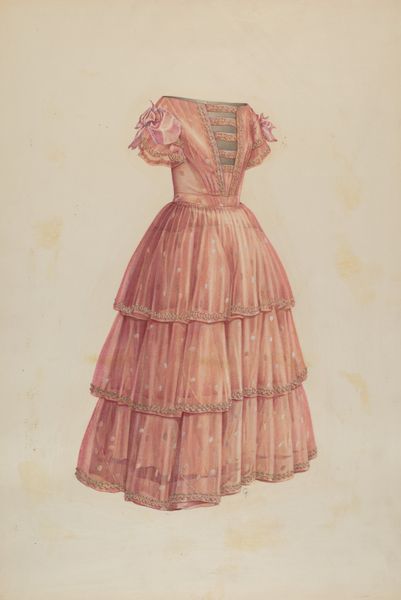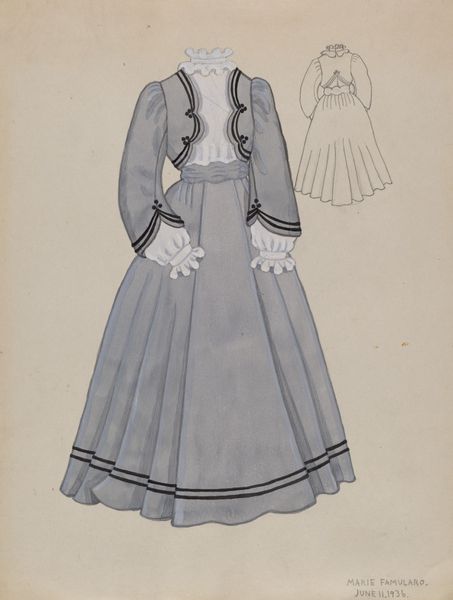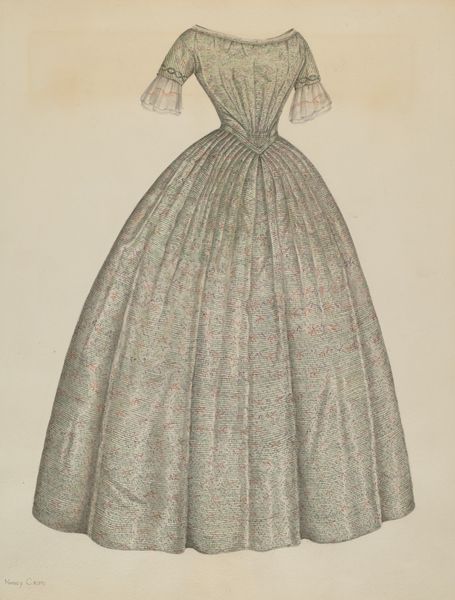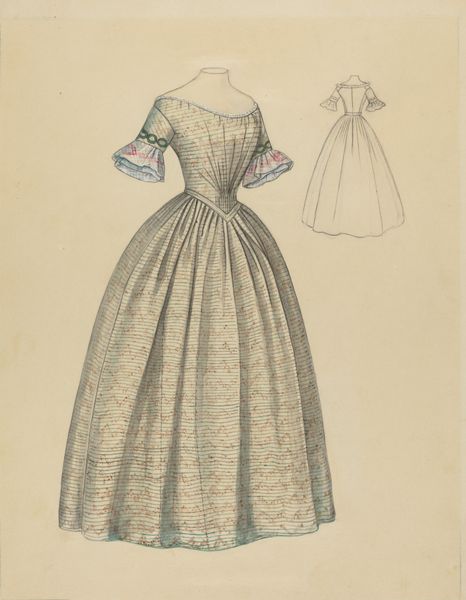
drawing, watercolor
#
drawing
#
figuration
#
watercolor
#
fashion sketch
Dimensions: overall: 30.4 x 22.9 cm (11 15/16 x 9 in.)
Copyright: National Gallery of Art: CC0 1.0
Editor: Here we have Jessie M. Benge’s “Dress,” likely from 1936, a watercolor and drawing combination. It looks like a fashion sketch, a dress from the 1700s almost. What historical context would something like this drawing exist in? Curator: Well, considering the mid-1930s date, it's interesting to consider this image in light of the Great Depression and the rise of historical revivalism in fashion. We see that even during times of economic hardship, people look to the past for inspiration. Think about the movies of that era – often filled with escapist glamour and historical settings. Does this drawing relate to that escapism, perhaps offering a vision of elegance in a difficult time? Editor: I see what you mean! The almost fairytale aspect in it, but also is it advertising or purely aspirational in design? Curator: That’s the core of it, isn’t it? In this case it likely isn't directly tied to the mainstream fashion industry or consumption. If it wasn't a project by an art student then perhaps it might have been a costume design? In either instance, fashion here offers a sense of stability and perhaps even defiance during that period. A way to retain a sense of beauty. The watercolor media itself is an accessible medium too, which speaks volumes. Editor: I never considered the economic climate when looking at fashion drawings. I usually just considered the aesthetic elements. Curator: Exactly! It goes to show how intertwined art and society truly are. Every artistic decision, even in fashion, reflects the cultural landscape. The fact that Benge chose such a classic and arguably opulent design says a lot about the social undercurrents. Editor: That's so true, I didn’t consider that even the choice of such drawing materials in a piece could make a difference. It certainly does add layers to our interpretation of the work.
Comments
No comments
Be the first to comment and join the conversation on the ultimate creative platform.

